Oh wass occurring? Gower Wassail brings Welsh tradition alive
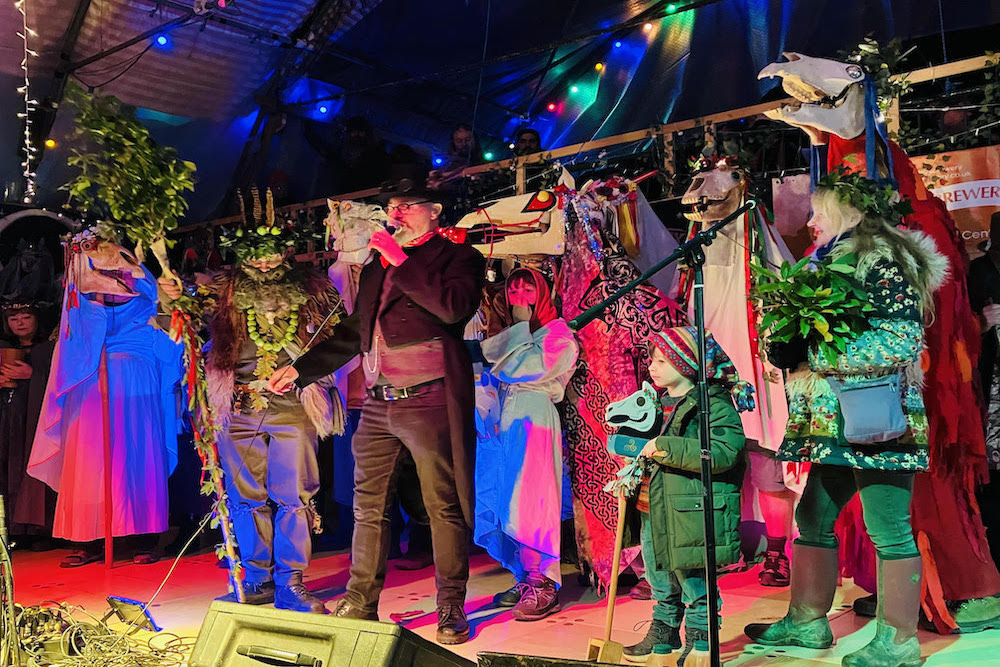
Pierre Donahue
A herd of brightly decorated horse skulls, on ghostly white sheets, are being followed by a procession of people banging pots and pans in the dark, whilst the call of “Wassail!!” rings loudly and enthusiastically around the cold night air. No, I’m not in an episode of Dr Who, in fact I’m at the delightfully weird Gower Wassail 2025.
Gower Heritage Centre in Parkmill seems a fitting venue for the night’s events, as the annual Wassail is a key part of Gower heritage and goes back hundreds of years.
The centre, based in an old mill a stones throw from Three Cliffs Bay, has a working water wheel that goes back to the 12th century, and has become known for its eclectic annual programme of festivals. Its a charmingly rambling place. Part museum, part community hub.
‘Wassailing’ comes from the Old Norse ‘ves heill’ or Old English ‘waes-haeil’, meaning ‘be in good health’, and rather sensibly links the health of the trees and crops with the health of the community. Basically it’s a very old traditional way of celebrating the Yuletide with some likely pagan roots.
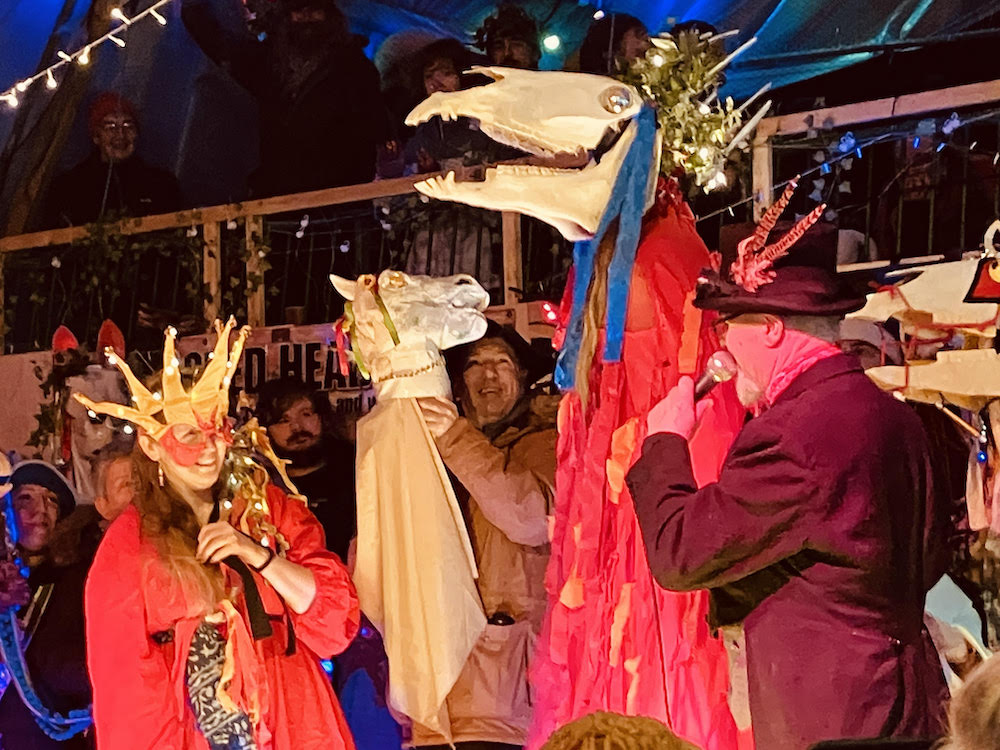
The horses skulls are actually to do with another old Welsh tradition that of the Mari Lwyd, and whilst it’s perhaps a little eerie, having giant horse skulls with lights burning from out of their eyes, they are actually quite fun and playfully led by chaperones, who try, and usually fail, to stop them from stealing hats.
Known across England, and other cider making areas such as Somerset and the West Country, it seems Gower has a particular pedigree when it comes to ‘Wassailing’, with records going back to at least 1884 when the traditional folk song “The Gower Wassail” first appeared.
There are two notable recordings of it. One by legendary Gower folk singer Phil Tanner made in 1936 and another by the equally legendary English folk rock band Steeleye Span from the 1970s. In fact, a brief look on Spotify shows versions by Shirley Collins, The Unthanks and others. It’s a British folk standard.
But what is it all about? And what have horse skulls got to do with it you might be asking yourself? Well, traditionally a band of local folk would journey from orchard to orchard shouting, singing, and banging pots to scare away the bad spirits and bless the trees to bring on a good crop.
However in the Welsh orchards, the mischievous Mari-Lwyd (horses skull) with her accompanying ostler, jester and lady were specific to certain areas, such as South Wales and Gower. The ‘grey mare’ is said to link with the Celtic tradition of pale horses that can cross over to the underworld.
As the procession moves through Parkmill it certainly all feels ancient and otherworldly, Or perhaps that’s the hot mulled cider talking. Either way with live folk music, fire breathing, books, arts and crafts and plenty of Hwyl it all feels like a very jolly way to spend a cold mid winter night. And perhaps, at its heart that’s the point. Our ancestors were no fools. Wassail!!
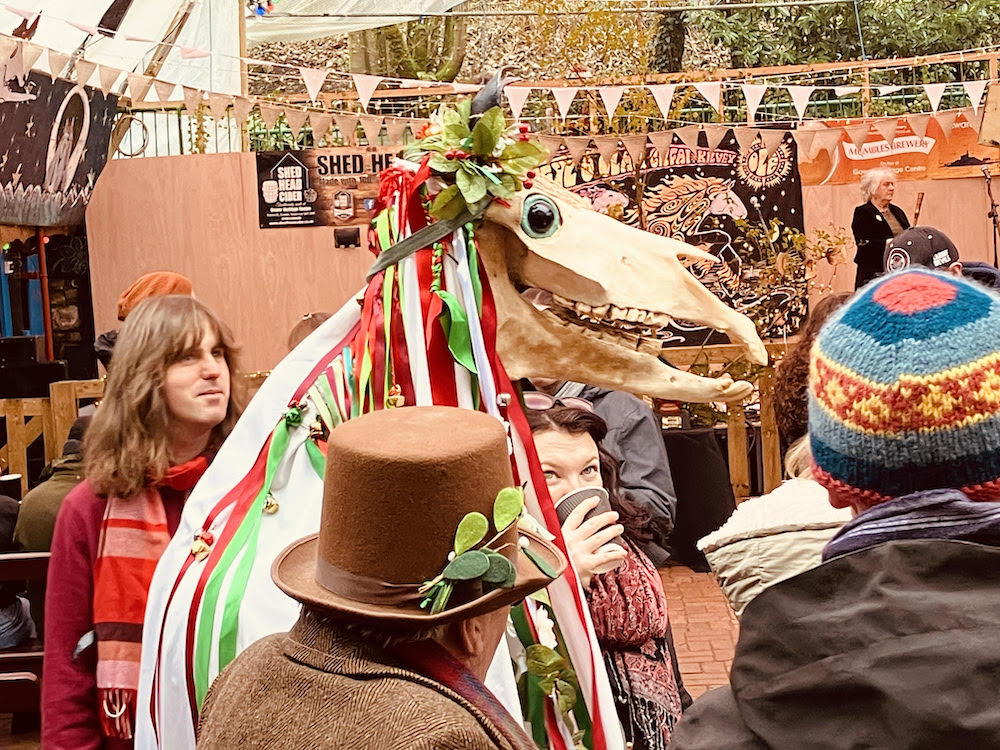
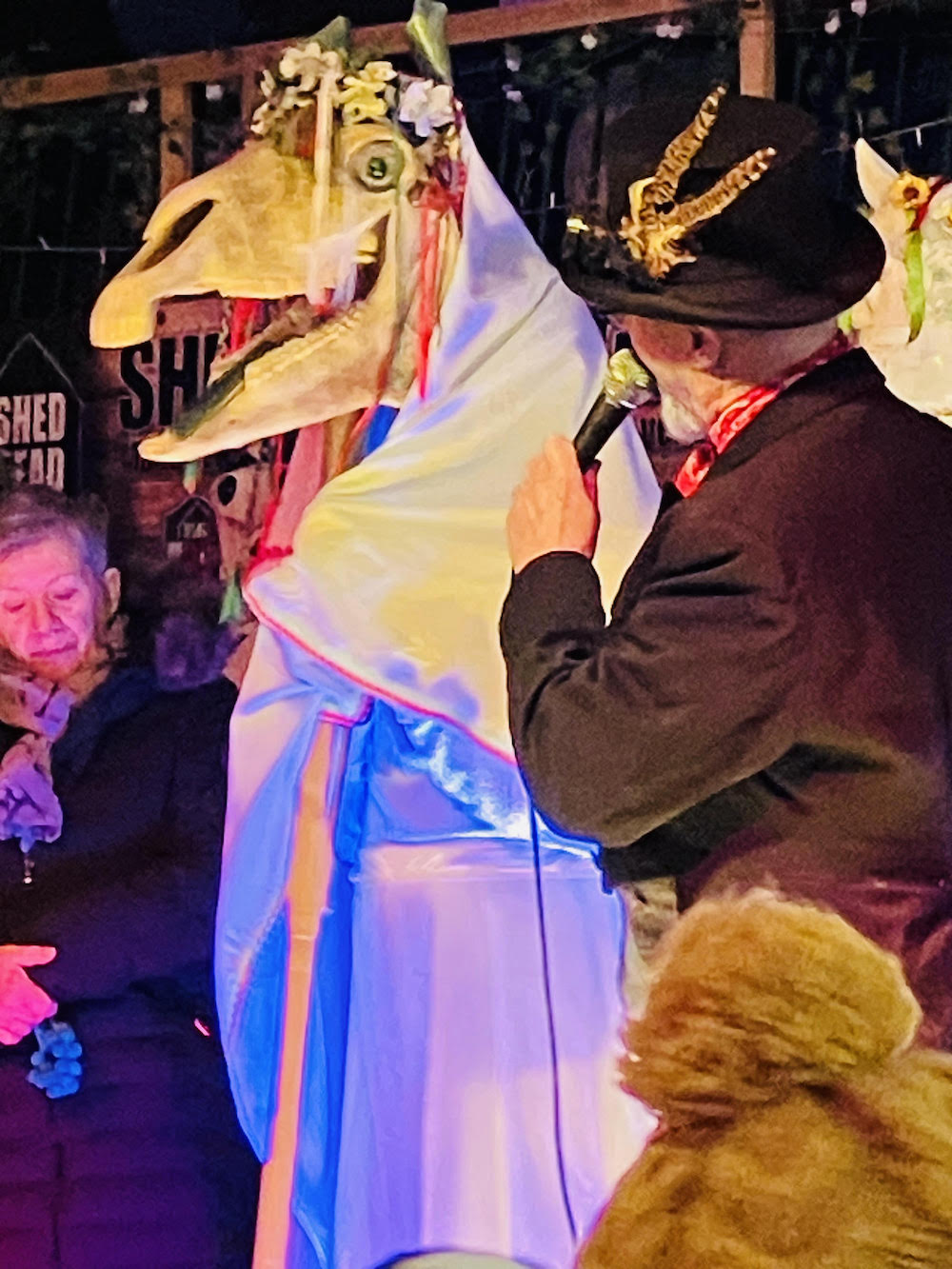
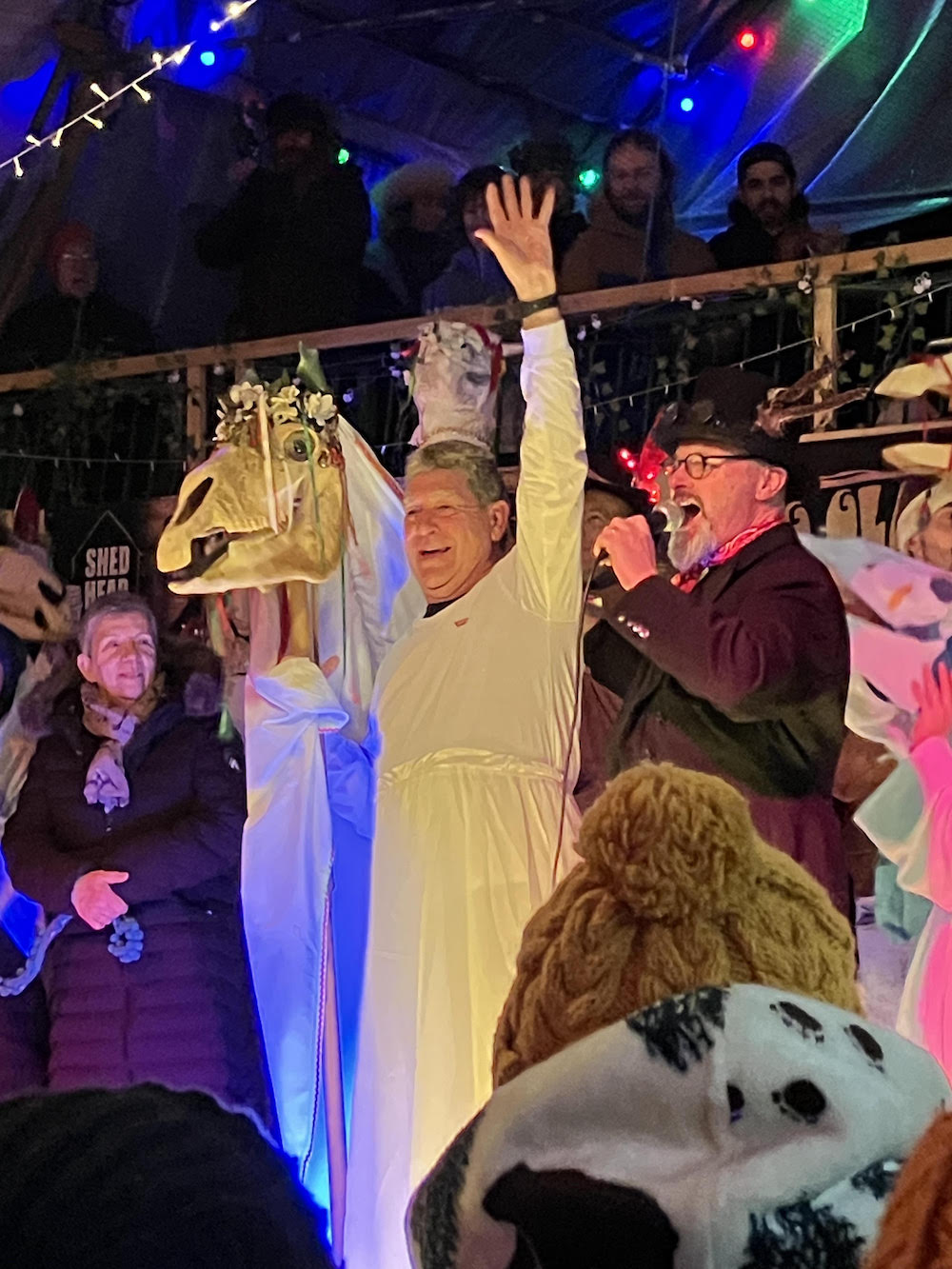
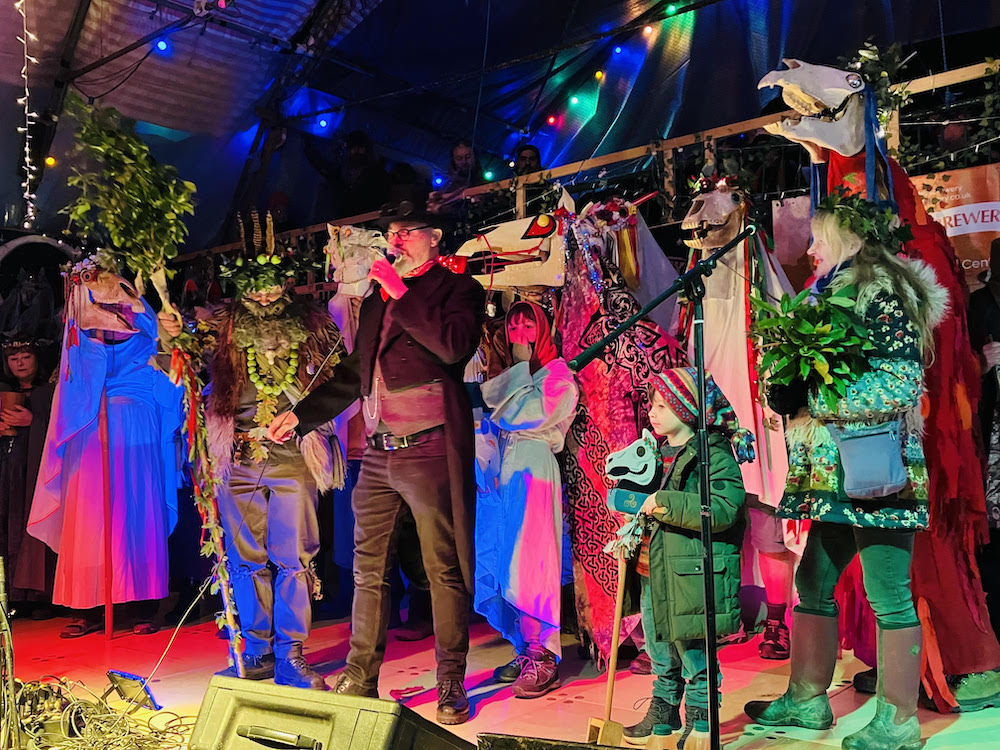
Support our Nation today
For the price of a cup of coffee a month you can help us create an independent, not-for-profit, national news service for the people of Wales, by the people of Wales.




